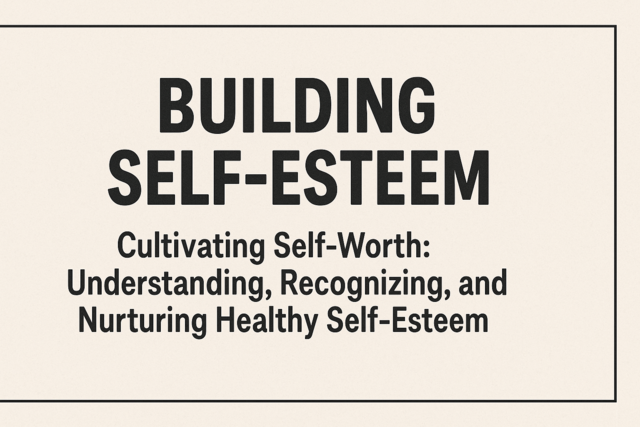Why resolutions may fail.
Resolutions may fail for a variety of reasons. To be perfectly honest, they will often fail because the mediator missed vital information.
But there are other reasons. These reasons might include new information, or a situation that exacerbates the problem. For example, if you help to sort out the problems associated between two departments that are sharing one photocopier, when a third department is formed and joins the fray, old wounds may re-open. If you are mediating the problem, you may have to go back and work through the process again.
But here are other possible solutions when faced with failure, or potential failure, of a resolution.
Take a break
Conflict takes a lot of energy and it builds up a lot of negative energy in the process. As a result, all parties end up on edge, angry, and frustrated.
One of the reasons why you separated the parties and interviewed them individually in the eight-step process, was to give them a break from each other.
If the resolution is beginning to fail and the conflict is starting to reappear, call a break. Simply grind the process to a halt and separate the parties again. You may have to go back and work through part of the process again, and build into the agreement some "insulation" -- a way to keep the parties away from each other, or at least limit their contact with each other.
Your break should be as long as it needs to be, without disrupting the flow of business. A good length of time for a break on inter-departmental conflict is over a weekend. Simply tell people to go home, take the weekend to cool off, and to come back on Monday with a clear head.
Escalate it
Occasionally you may have to escalate the situation. If you are an in-house mediator, you need to approach a higher-up and talk to them about the conflict with the representatives. If you are a mediating consultant, you can probably more easily go on your own to a higher-up to talk about the conflict. However, you need to be aware that you carefully consider two things before you go:
1. How is that supervisor going to be influenced by the outcome? Will it affect their decision?
2. How good is that supervisor at graciously mediating conflict?
You have to ask the first question in order to determine if they are the best person to talk to. You may find that an immediate supervisor could be heavily influenced by the conflict, and can come in with an iron fist and mandate unwanted change.
You have to ask the second question because sometimes managers -- if they are not good at handling conflict -- can mandate a resolution that does not seem equitable to one or both parties. If they do that, the conflict is not actually resolved and hard feelings will continue.
Talk to a mediator
If you are an employee trying to mediate a conflict at your place of work, and the conflict gets too out of hand, it may be time to call in a mediator. Don't feel bad if that happens. If you have the authority to do it, go ahead and do it. If you don't have the authority to call in a mediator, you may want to recommend it.
Fire the employee
If you are a supervisor, there may be times when firing an employee is appropriate. However, you need to be aware that this should be considered a last resort. The reason is that you will be fighting against perceptions -- both from that employee and from the rest of the organization -- that you could not handle the conflict, and thus dealt with it by getting rid of the employee.
However, there are times when firing an employee is appropriate. This might be when your employee is highly combative and factious, causing excess conflict over meaningless things, or even bringing in personal animosity.
Before you fire an employee, be sure to talk to Human Resources to make sure that you have the right and the authority to fire the employee. As well, you will probably want to document the situation so that you have something to back up your decision. If you haven't documented any of their resistance to the resolution, for example, they could claim that you were discriminating against them.
Disband the team
If you have a team that is experiencing conflict inside of it, or a couple of teams that are experiencing conflict between them, you may want to consider disbanding them. Sometimes, you may simply want to call off the teams and re-evaluate the value of the project. After all, no project is worth doing if it is going to destroy the work environment.
Summary
Even if your attempts at resolution fail, you still have several options available to you. You can take a break, escalate the situation, fire the employee, hire a mediator, or disband the team in order to help address the situation.
Each solution is going to be appropriate under different circumstances. You will need to decide if it is appropriate for your situation.
At A Glance
You have learned how to deal with conflict, and you have learned what to do if a resolution fails. Fortunately, you do not have to wait until there's conflict before you can deal with conflict. In fact, you can deal with conflict before it even happens by using and encouraging positive communication to help avoid conflict altogether.
Avoiding conflict is not ignoring conflict. Ignoring conflict is not healthy. If you have conflict in your office, you need to deal with it. On the other hand, avoiding conflict is very healthy and encouraged. Aside from healthy debate and discussion in a business setting, there is absolutely no room for conflict in business.
In this section you will learn the different ways that you can help to avoid conflict before it develops.
People communicate in different ways.
Use a personality analysis tool. There are many excellent analysis tools out there. If you are a new manager, or you have never done one of these in your office, consider spending an afternoon to do it. Although you might think at first glance that it's a waste of an afternoon, consider this to be an afternoon spent to proactively encourage the avoidance of conflict. What you spend in helping people understand themselves will save you later when you don't lose time and productivity because of conflict.
Using these analysis tools helps your employees to remember that each one of us uses different ways to communicate. It's a way to help encourage open lines of communication in your office; and it's a way to help people understand themselves, and where they might be vulnerable to engaging in conflict.
One excellent personality analysis tool is Myers-Briggs, which divides people into the following categories:
|
Description |
Either/Or |
Description |
|
|
Introvert |
I |
E |
Extrovert |
|
Intuitive |
I |
S |
Sensor |
|
Thinker |
T |
F |
Feeler |
|
Judger |
J |
P |
Perceiver |
If you are able to fit this one into your budget, do so; it is one of the best.
Another excellent personality analysis tool is one that uses colors or letters to help describe personality types.
There are many of these tools and they are fairly detailed, so we are not going to go into great detail about them here. Look around for a good one and ask your Human Resources manager to help you by suggesting a good one. They may have one already that they can recommend.
Keep your mouth shut.
Suggesting that everyone take a personality analysis test to help them communicate will work well for someone who is a manager. However, if you are not a manager, but simply a colleague who is trying to help mediate a conflict, or if you are someone who thinks that there could someday be a conflict in your department, this is good advice: Keep your mouth shut. It's the old adage of "If you have nothing good to say, don't say anything."
This sounds like humorous advice to give, but it is sound advice. Don't offer advice, suggestions, or concerns unless you're willing to perform them yourself. Too many conflicts arise when plenty of people have suggestions about how they think someone else should act. If you are going to give a suggestion, be prepared to act on it yourself, or be able to back up how you have enjoyed success by practicing that method.
Be positive.
When you are being positive, use the word "you" a lot. Compliment other people as much as possible and be gracious to everyone. Be quick to say I'm sorry when something is your fault. Accept responsibility when appropriate.
Conflict happens a lot because people are proud and stubborn and not always nice. This gets other people to feel like "their feathers are ruffled," and they don't want to deal with the person, or they feel that the only answer is to fight fire with fire.
Encourage a positive atmosphere in your office setting.
Avoid negativity.
On the other hand, avoid criticism. When people start to feel offended, avoid the word "you." Rather than saying "you did this and you did that," turn it around and talk about how it made you feel. Focus on your feelings, rather than on an analysis or critique of the other person.
For example, don't say: "You're not a very good organizer, because you forgot to schedule the room for the event like you promised you would." Instead, say something like: "I was really frustrated because the room wasn't scheduled." This is a difficult skill to acquire but it is very useful in helping to immediately quiet down all types of conflict, whether at home or at work.
There are times when you do need to provide criticism. That's simply the nature of business: At times, you need to help improve situations by providing criticism. The difference, though, is that it should be constructive. One way to do this, is to promote the use of the "sandwich method" around your office.
The sandwich method works like this:
Give a compliment, make a suggestion for improvement, then give another compliment. When you introduce this method to people, have them practice it. At first, it may sound awkward to implement, but once you build it into your habits, it will come out naturally and people will not feel that others are being as critical of them if there is one suggestion for improvement sandwiched between two authentic compliments.
Please note, the compliments and suggestions should all be work-related and detailed enough to actually be helpful. Below, we have outlined a good and bad example of the sandwich method in action:
|
Good example |
Bad example |
|
Compliment: I really like what you did on the Johnson account when you sold the customer the additional warranty. |
Compliment: I really like how you handled the Johnson account. (There isn't enough detail in this compliment). |
|
Suggestion for improvement: I would like to see more attention paid to completing the paperwork after each sale. |
Suggestion for improvement: You need to try and do a better job when it comes to the paperwork. I think you're pretty scatterbrained or lazy and disorganized because the paperwork isn't getting done properly. (This criticism isn't constructive; it's quite hurtful). |
|
Compliment: I really like the help you've given the new sales staff when customers give them objections they cannot overcome: You come in and help them by answering the customer's questions, and it doesn't seem like you're interrupting or trying to steal the sale. |
Compliment: I like your shoes. (This compliment has nothing to do with work). |
Be clear.
How can you be clearer?
1. Write down expectations. Be very clear in describing how you expect the project to be completed. If you are not in charge, be sure to frame your opinions in how you see the project being done, and invite others to contribute their opinions or suggestions. By doing this before you start the project, you'll help to avoid difficulties and misunderstandings before they crop up.
2. Form informal, written contracts. If you are heading up a group, this is a good step to put into place. Rather than simply assigning projects for members of the group to do, it is wise to create informal contracts to ensure completion. In a group setting, have people discuss how they see the particular project getting completed. Then break down the project into smaller sections and have each person take care of a section. Rather than just scheduling the next meeting to review progress, have each person provide you with a written agreement to do the particular details of the project. This will help avoid situations that can occur at the next meeting, when someone says, "I thought Mary was going to take care of that; it has more to do with her part of the project than with mine."
3. Save all communications. It doesn't matter whether you're in management or you simply want to be prepared in case there is a conflict. Save all of your communications -- whether it's in the form of emails or letters or memos. If a phone call comes through, record the date, time, and what the phone call was about. If you are concerned that the IT department is going to purge old files, print your emails and online correspondence. Later, if a dispute occurs, you will have your communication to back you up. This puts you in a very strong bargaining position, since most people do not save their correspondence.
Summary
You don't have to wait until conflict occurs before you deal with it. You can aggressively and proactively eliminate conflict before it arises by following these principles religiously in your office: Recognize that people communicate in different ways. Keep your mouth shut. Be positive. Avoid negativity. Be clear.































